Basement subfloor retrofit insulation options
We recently renovated our 1897 brick workman’s cottage here in Chicago. We’ve done our best to upgrade the energy efficiency of it including insulation upgrades– although based on some of threads, may have made a few not optimal decisions (closed cell soy foam interior – we’re in an historic district so we cannot make any changes to the exterior.). We’re now seeking to tackle our basement floor, specifically insulate it.
This is an existing floor poured by the previous owner in the early nineties. It is a 4” thick slab sitting on a sand/soil base – our ground is very sandy in our particular location. We have no leaks and very little moisture except for one area (6”x 36”) where the below grade exterior brick is absorbing moisture from the ground soil. Our plan is to dig out this area (exterior) and install an exterior water vapor barrier in the Spring. In the interim, we want to begin insulating the floor and installing a ‘finished’ floor. I’ve read through all of the threads as well as a number of building science corporation articles and believe the below is the best approach but am looking for any experience/feedback.
• 1” XPS foam board with taped seams – directly on slab
• .5” plywood mounted perpendicular to the XPS and anchored to the slab through the xps using tapcon screws (necessary to anchor?)
• .5” plywood mounted perpendicular to and anchored to the first plywood layer
• Finished floor options include: floating cork floor, simple sand/stain and seal of the plywood, tile, FLOR carpet tiles, etc. No wall to wall carpeting.
My questions are:
1. Is it necessary to anchor the first layer of plywood if a second layer is being installed?
2. Is it possible to install a single layer of a material such as Richlite (‘skate park boards’) instead of two plywood layers?
3. Is it possible to install a single layer of hardiboard instead of two plywood layers?
The 1” XPS is a definite but we’re flexible on the other methodologies. I’m trying to avoid old school sleepers (poor insulation, height) and simplify installation as much as possible as this will be a DIY as well as retain as much headroom (8’6”) as possible.
Note: The walls are already finished () with the bottom wall stud sitting on the concrete slab.
Thanks.
GBA Detail Library
A collection of one thousand construction details organized by climate and house part



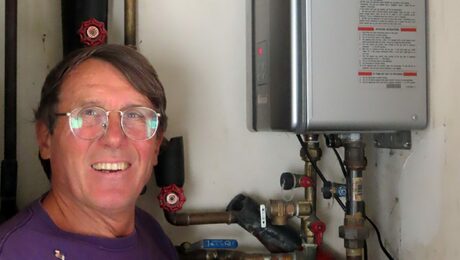
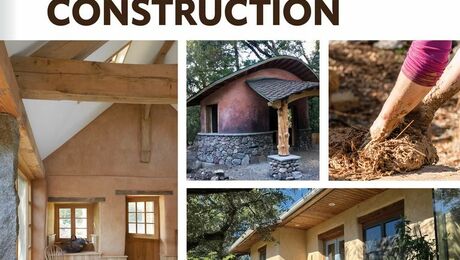
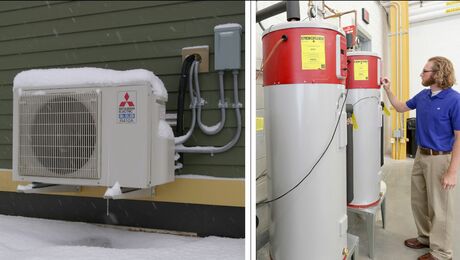
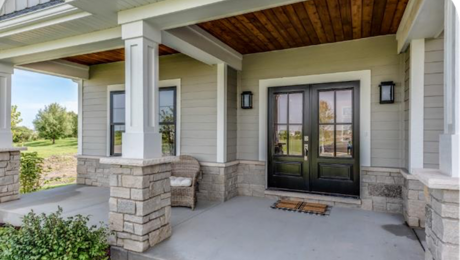
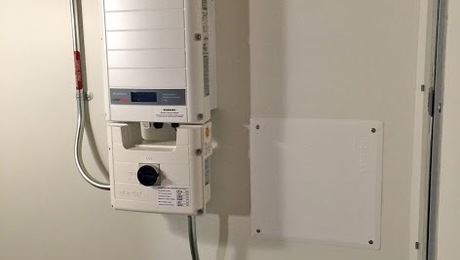

Replies
The answer depends on intended use for the space. Utility & storage, workshop, gym, dance floor, rec room...??? Is it fully conditioned or just incidentally heated? Well ventilated and humidity-controlled?
Any vapor barrier under the slab? If not, then I would think you'll have to be careful w/ what you put on top, as you'll need to let the floor breathe upward, it seems to me. One of the pros here can comment on whether or not to put a VB on top of the slab, if one is not underneath. I'd call it "risky", but dunno.
Wow, thanks for the quick responses. In answer to your questions Robert, the primary function of the basement will be the kid’s playroom – which it currently is now. My long term goal is set up a sectional with a video monitor in addition to our Mac, etc. Pretty standard stuff. No pool tables, workout equipment (apart from my race bike and trainer/rollers); e.g., nothing heavy. Another section of the space (in the addition) contains our mudroom and utility room (already tiled). The space is fully conditioned with ceiling HVAC including a built in humidifier. We also have four ‘full’ double hung windows for ventilation in the summer.
John, with regard to your comments, there unfortunately is not a vapor barrier under the slab. While we lucked out on the basement ceiling height for a 110 year old retrofit, the previous owner was not knowledgeable regarding under slab insulation. If a vapor break is absolutely necessary, I’d likely install an Enkadrain or something similar to allow for the air flow.
Incidentally, our house has had an energy audit before and after which lead us to some of our initial decisions and to ensure our HVAC needs were scaled appropriately. Hopefully this helps.
great question. I'm sure there are many of us who had to deal with older homes (I'll consider an 1897 brick home old..) which were built long before they started installing VB's under concrete slabs. I installed 6mil poly on top of the slab, 2" of XPS with taped seams, 5/8" OSB (is getting screwed down with tapcons). Future plan is to run 3/4" sleepers, 5/8" PEX and finished wood flooring on top. The floor XPS is sealed to the wall XPS, the wall XPS is sealed to the sole plate XPS which is sealed to the outsulated rim board.
Why not install 5/8" or 3/4" single layer of ply instead of two .5" layers?
It would be a good idea to get the studs off of the slab, you can under cut them when installing the xps and have them sit on top of the new ply.
Have you considered Barricade subfloor products? Similar to what you propose, easier to install, a bit more expensive but the panels fit together t&g and the system is more rigid because the foam and panels are adhered. http://www.ovrx.com/
Thanks. Yes, I did consider the barricade system but the higher cost (3X) and lower R value (1" is my planned install) were negatives for us. I don't mind the extra work if the end results is positive. Basically our plan came from Building Science Corporation’s (BSC) suggestions for basement insulation retrofits. Unfortunately there’s no option for discourse on their site in which to ask questions specific to one’s project.
Raff, regarding your comments, your project sounds great, very similar to ours. I like the idea of the radiant heat. We may look at that as well though the height loss may be too much. We don’t have XPS in the walls (closed cell foam) and the only way to get to it would be to undercut the horizontal 2x4 the studs are sitting on. With the drywall already ready installed and finished, that's not an appealing/technically feasible (for me) option. Instead we'll run our XPS directly to the studs and seal the joint with caulk/spray foam.
As far as 2 .5” layers versus one .75” layer, that’s coming from BSC’s most recent (2002) retrofit recommendations. They don’t explain why one layer versus two. I’d love to go with a single .75” layer if it’s sturdy enough as its less expensive and less work.
Basically, from all of the comments so far, it seems as if our plan is solid with the exception of adding an enkadrain/platon layer below the XPS and whether we go with dual .5” layers vs. a single .75” plywood layer – the radiant heat option is a nice to have and could come later. Also it’s confirmed that we do need to anchor our plywood layer.
Any last thoughts on the single vs. dual plywood?
How about two layers XPS with offset taped seams, 1x6 sleepers anchored to slab through XPS 12" OC with 1/2" PEX radiant between, and oak or pine flooring nailed to the 1x6's.
that was the original idea Michael, but we ran out of time and needed to put down a temp (up to two years) floor to be able to move in asap.
Brandon, I'm only screwing the OSB down because of slight cupping of the panels which produced some bounce, and peaks and valleys in the slab. If your slab is in decent shape and you're dealing with flat panels, you could prolly let it float.
Also, check out Dr. Joe's publication from 2008:
http://www.buildingscience.com/documents/insights/bsi-003-concrete-floor-problems/files/bsi-003_concrete_floor_problems.pdf
Thanks again for all of the feedback!
I bet you could lay a cheap snap together laminate floor right on the foam and be done with it if your foam is laying flat on well poured flat concrete. Tape the foam and if you want double protection use to taped layers of foam instead of one.
At 99 cents a square foot... try it by buying a package and walking on it for some time.
two not to.... jeesh
I'm in the process of laying 1" xps with a single sheet of t & g 5/8" OSB. Something to add to your cost calculations: tapcon screws, mortar drill bits around $3 each and you will use many, even the philips head tips at $2 each keep cracking with my impact drill putting in the tapcons.
I think I am probably nearing $1.20/sq ft with lots of frustration. (this doesn't include my new $200 impact drill which is really worth it.) I'm beginning to think the Baricade system is looking like a good value. Perhaps put down 3/4 " xps with the Baricade on top. Very little screwing and much easier for the DIYer.
Agreed - a floating floor makes a lot more sense over a concrete slab. It can be either fully floating T&G tiles or adhered with mastic.
SEANCHICAGO and RAFF how did your projects turn out? We put ours on hold due to other priorities that popped up but the family is asking when we're going to lose our concrete foundation floor... I'd love to hear about your results. We can also take off line. We're in Wicker Park.
brandon
Hi Brandon, so far so good... Our Canadian winter has been very mild this year, but we're keeping over 3000sqft of living space heated with a single 1500W portable electric heater. It's located in the basement and the stack effect takes care of the main floor and loft. We've had a couple of -20C weekends and we've had to be very careful using our woodstove. With a single full load in the Hearthstone Equinox on the main floor, it's easy to coast for three days with comfortable temps upstairs, but it gets too hot on day one.
We decided not to put in any PEX heating anywhere. If we can heat the whole house with a single 120v plug in 1500W electric heater during a mild winter (-16C - +2C), even if it takes two 2000W heaters during a cold spell (-17C - -40C) the ROI on anything else but electric doesn't make sense IMO..
I'm very impressed with the REMOTE wall system, and all the thermal upgrade choices made.
As the old saying goes.. the proof of the puddin' is in the eating...lol
I did about 700ft sq using 1" XPS with taped seams, 5/8 OSB tapcon fasteners, then 12mm laminate over the whole thing.
Worked out great, if you are snapping heads off Tapcons, you have not drilled deep enough, go 1" deeper than whatever depth the Tapcon will end up at......
I only used 2 tapcon drill bits for the entire floor, maybe snapped one screw head off.
Brandon, you are on the right track. What you are doing will work perfectly and yield a comfortable floor. I'll attach a few photos of a floor done that way. EPS foam was used but XPS would have been better. Don't forget to tape the seams of the foam.
Don't use a hammer drill -- buy or rent a rotary hammer. It will save you hours of frustration depending on the hardness of your slab. As someone said, "rotary hammers are for drilling holes in concrete and hammer drills are for playing a joke on your helper."
I suggest using 3/4" or 5/8" plywood for your first layer because you'll be glad you have that extra thickness when you're trying to screw and countersink the second layer of plywood to the first.
See below.
Billy
Hate to resurrect this again (question is 2+ years old) but was wondering what you settled with Brandon? I'm in the same position now and have similar plans but am sticking with a single layer of 3/4" T&G plywood floated over 1" XPS, no mechanical fastening. I read the same Building Science article and in the one graphic that shows the floor detail it contradicts what they recommend later in the article in regards to fastening to the concrete.
http://www.buildingscience.com/documents/reports/rr-0309-renovating-your-basment
In the graphic it recommends mechanical fastening but further down it says
"If a concrete slab is in good repair and does not have significant water problems (liquid water on the surface) sheets of extruded polystyrene can be installed directly on the slab. The joints between sheets should be sealed with tape or mesh imbedded in mastic. A plywood floor can then be “floated” over the XPS insulation in either of two ways. If sufficient room height is available wood sleepers (2X4 or other dimensional lumber) can be installed to which the flooring is mechanically fastened. This is illustrated in Photograph 3. If room height is minimal, tongue and groove plywood with the butt ends of the plywood joined can “float” above the XPS insulation. Wood biscuits are one method for jointing the butt ends so that one sheet cannot ride up above the next sheet."
As for why the recommendation of two sheets of plywood I don't understand. Most XPS has as least a 15 PSI rating which translates to 2160 PSF, way more than a framed floor. Add 3/4" T&G plywood on top of that and an elephant could stand on it and not have any flex.
Thoughts?
Rick,
The two layers of plywood (installed with staggered seams, and with the top layer screwed to the lower layer) are one way to avoid the "potato chipping" problem. (Curling plywood.)
Tongue-and-groove plywood (or the use of biscuits) is another approach to address possible potato-chipping.
I went with vapour barrier on concrete, taped and acoustic sealed around edges, then 2.5" XPS glued and taped, two layers 5/8" T&G ply, with first layer tapcon'd. If you use enough tapcons, it gives added support, as the second layer of ply sits on top of tapcons.
I am considering what thickness xps to use for my slab insulation project. I have a garage at ground level i am finishing into a one bedroom apartment. i am considering a 6mil vapor barrier, 1 inch xps and then either sleepers (tapconed to the slab) at 1 inch installed at the seams in the xps and the 3/4 plywood screwed to that with a few longer tapcons in the center to hold down the the ply.
Let me know your thoughts!!!
David,
1. We need to know your climate zone or geographical location to give you good advice on the best R-value for your floor insulation.
2. Your suggested insulation -- 1 inch of XPS, or R-5 -- isn't much.
3. In most climate zones, you will need to install vertical rigid foam insulation (generally extending into the soil about 24 inches) at the exterior perimeter of your slab. The above-grade portion of this vertical rigid foam needs to be protected with metal flashing or pressure-treated plywood. You will also need to install Z-flashing at the horizontal seam where the bottom course of siding meets the top of the material used to protect the rigid foam.
4. The sleepers are unnecessary. Instead of installing sleepers, install thicker rigid foam, followed by plywood that is attached to the concrete slab with TapCon fasteners.
+1 on skipping the sleepers- it's a complete waste of vertical space, and can lead to a flexier-squeakier floor.
Use 1.5" - 2" EPS (R6-R8) instead of 1-1.5" of XPS (R5-R7.5) is cheaper and much greener. In 50 years when the XPS blowing agents are fully depleted it will have the same R-value as EPS of similar density and thickness anyway. Unless the space is being heated by radiant floor there's neither a lifecycle-financial or comfort rationale for more than R8 unless you're in US climate zone 6 or higher.
To chime in late, there are some EPS foam panels that have an R5 per inch now, such as those that contain BASF Neopor (graphite) and they are still 1/2 to a 1/3 of the cost of XPS. They can also have a foil-face that can pass as a certified vapor barrier when all seams are filled and taped.
Todd
I agree with Martin. Using a VB under the foam might be a good idea, but putting dozens of holes in it with the tapcons makes it virtually useless - except that if water gets in there on top of the poly, it’ll take longer to get out. If you’re not using a VB, but worried about it moving, glue it.